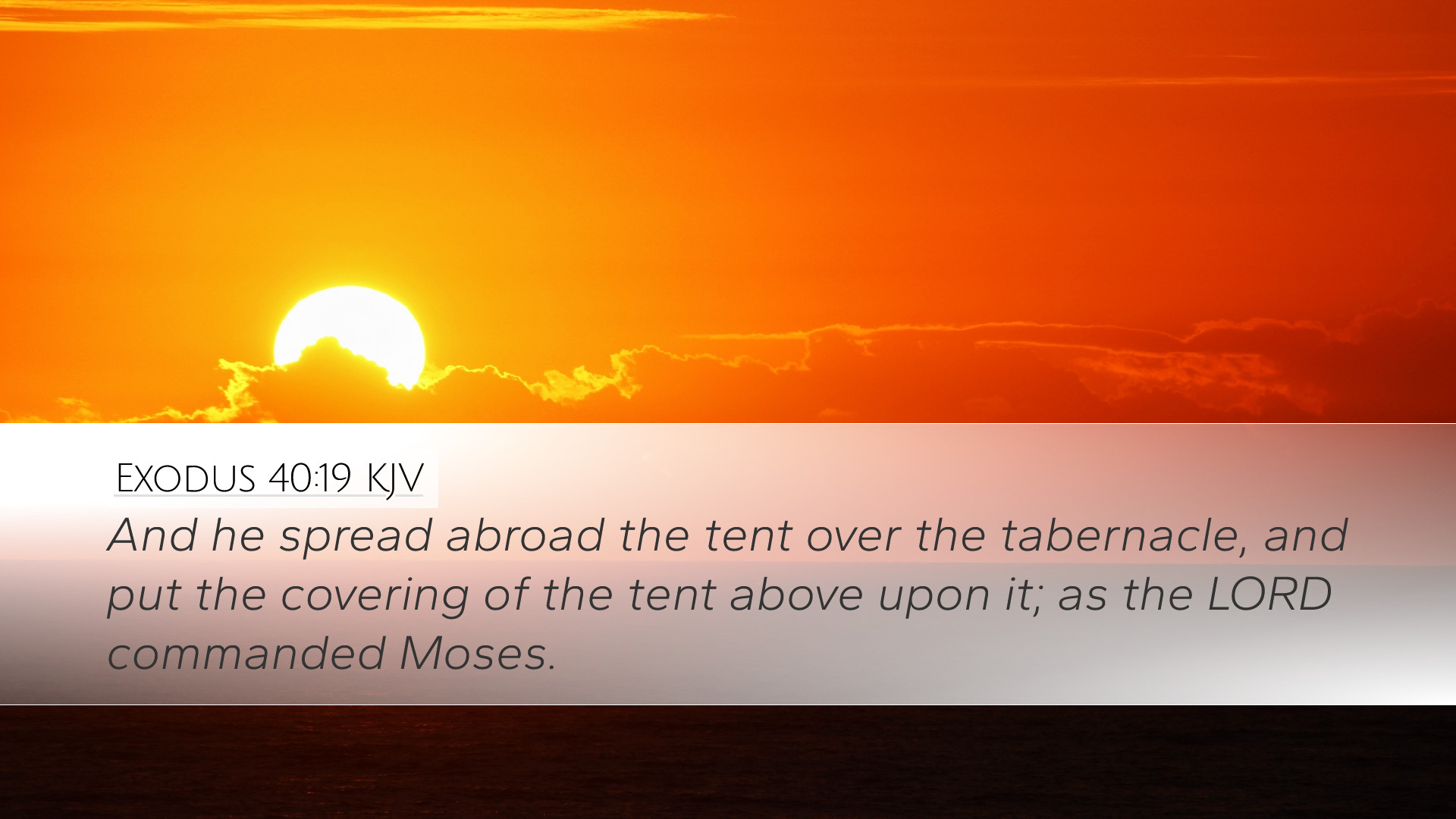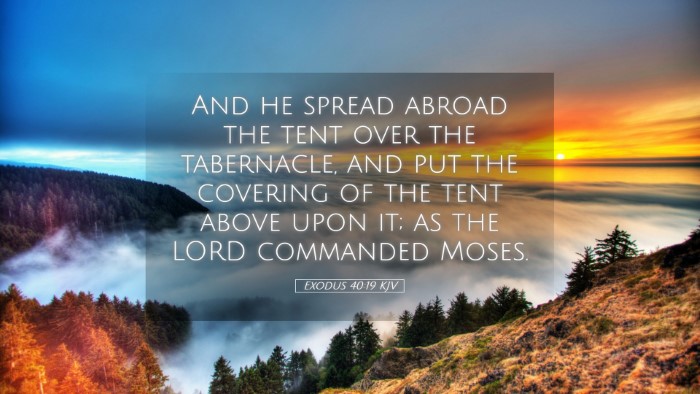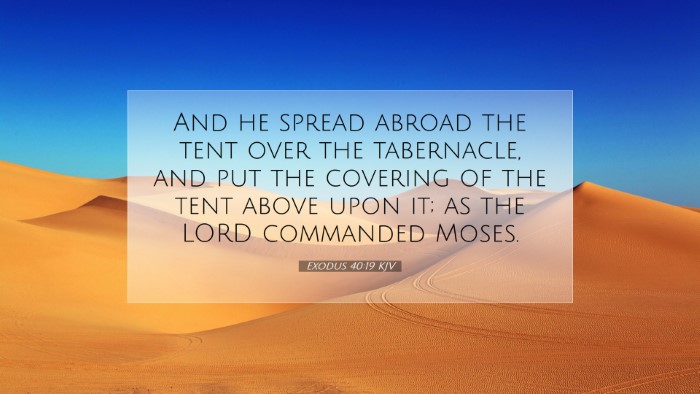Exodus 40:19 - Commentary
Verse Context: Exodus 40:19 states, "And he spread abroad the tent over the tabernacle, and put the covering of the tent above upon it; as the Lord commanded Moses." This verse encapsulates a pivotal moment in the establishment of the tabernacle, which was central to Israel's worship and their relationship with God.
Overview of the Tabernacle
The tabernacle served as the dwelling place of God's presence among His people during their journey through the wilderness. The meticulous details surrounding its construction reflect God's desire for order and holiness within His worship. The instruction to Moses highlighted the Divine blueprint for the tabernacle's design and assembly, emphasizing that the services performed therein were not of human origin but divinely ordained.
Commentary Insights
Matthew Henry's Commentary
Matthew Henry emphasizes that the act of spreading the tent signifies the fulfillment of God's command. It illustrates the obedience of Moses in executing God's instructions precisely. This adherence to God's commands reflects the importance of worship and service that aligns with Divine expectations. Henry remarks that, in this instance, the Tabernacle represents a temporary dwelling while highlighting the ultimate need for God’s permanent presence in human life. The covering signifies protection and the sanctity of the place where God meets His people, further underscoring God's care and providence.
Albert Barnes' Notes
Albert Barnes elaborates on the significance of the physical act of covering the tabernacle. He notes that this act showcased Moses' thorough compliance with God's directive, indicating that the structure's arrangement was essential for God’s glory. Barnes points out that the covering served to preserve the tabernacle from the elements, emphasizing that God’s service should always be provided with care and respect. He draws attention to how the covering separates the sacred from the worldly and acts as a symbol of God shielding His people. Additionally, Barnes relates the overarching theme of obedience—highlighting that walking in God’s commandments is paramount to experiencing His presence.
Adam Clarke's Commentary
Adam Clarke focuses on the symbolic nature of the coverings. He explains how the coverings of the tabernacle represent the nature of worship—approaching God with reverence and awe. Clarke notes that the various layers of coverings indicate a hierarchy of spiritual experiences—creating a distinction between the sacred and the common. He stresses the importance of understanding the tabernacle's construction as a foreshadowing of Christ's ultimate sacrifice and the veil that was torn at His death. Thus, Clarke underscores how the tabernacle's design not only met immediate worship needs but also carried prophetic significance for the New Covenant.
Theological Implications
The construction and assembly of the tabernacle, particularly in Exodus 40:19, offers deep theological insights for pastors and theologians. The significance of God dwelling among His people is foundational to understanding the covenant relationship between God and Israel. Furthermore, the emphasis on obedience in fulfilling God's commands serves as a reminder for contemporary worship. The care placed in designing the tabernacle also reflects the importance of aesthetics in sacred spaces, indicating that how we honor God through our surroundings matters deeply.
Obedience and Divine Presence
This verse teaches about the necessity of obedience for experiencing the fullness of God's presence. Just as Moses followed God's instructions, we are called to live in alignment with God's Word, ensuring that our lives reflect His holiness. Hebrews 8:5 highlights that the tabernacle was a shadow of heavenly things, emphasizing the importance of earthly actions in the context of divine worship.
Application for Worship
In practical terms, this commentary challenges the Church today to consider how worship spaces are designed and maintained. Are they reflecting the sacredness of our gatherings? Are we following divine principles in our worship practices? This reflection can lead to a renewed commitment to worship that honors God’s presence.
Conclusion
Exodus 40:19 stands as a reminder of God's desire to dwell among His people. The act of Moses covering the tabernacle per divine command not only signifies obedience but also the profound importance of creating spaces for worship that are worthy of God’s presence. As we explore these insights from public domain commentaries, we gain a richer understanding of the tabernacle’s relevance for both ancient Israel and the believer today. Through meticulous attention to God's mandates, we learn to foster environments where His presence can thrive, leading to deeper communion and worship.


